
Yuma: The Sunniest Place on Earth
Discover Yuma, Arizona: The sunniest place on earth where history, nature, and agriculture converge to create a unique and unforgettable travel experience.
Yuma, Arizona, is a hidden gem in the southwestern United States, renowned for its incredible sunshine and rich history. Nestled near the Colorado River and bordered by California and Mexico, Yuma offers a unique blend of cultures and experiences. With over 310 sunny days a year, it's no wonder Yuma holds the title of the sunniest place on earth. History buffs will be enchanted by the Yuma Territorial Prison State Historic Park, a fascinating site that dates back to the late 1800s. Here, you can explore the cells and learn about the stories of the Old West. The Yuma Quartermaster Depot State Historic Park is another must-visit, showcasing military artifacts and providing insight into the area's strategic importance during the 19th century. Nature lovers will find plenty to do in Yuma as well. The nearby Imperial Sand Dunes offer a striking landscape perfect for off-roading and photography. Birdwatchers can head to the Yuma East Wetlands, a restored habitat teeming with diverse wildlife. For a tranquil escape, take a stroll through the historic downtown area, where you can browse local shops, enjoy delicious Southwestern cuisine, and soak in the charming atmosphere. Yuma is also famous for its agricultural bounty. A visit to one of the local farms or the Yuma Farmers Market will give you a taste of the freshest produce around. From juicy dates to crisp lettuce, Yuma's agricultural scene is a delight for foodies. Don't forget to check out the annual Yuma Lettuce Days festival, celebrating the city's rich farming heritage with fun activities, food tastings, and entertainment.
Local tips in Yuma
- Visit during the winter months (November to March) for the most pleasant weather.
- Wear sunscreen and stay hydrated; Yuma's desert climate can be intense.
- Check the local event calendar for festivals and seasonal activities.
- Explore the historic downtown area on foot to fully appreciate its charm.
- Don't miss a tour of the Yuma Territorial Prison for a glimpse into the Old West.
- Renting a 4x4 vehicle is recommended for exploring the Imperial Sand Dunes.
- Sample local produce at the Yuma Farmers Market for a farm-to-table experience.
Yuma: The Sunniest Place on Earth
Yuma, Arizona, is a hidden gem in the southwestern United States, renowned for its incredible sunshine and rich history. Nestled near the Colorado River and bordered by California and Mexico, Yuma offers a unique blend of cultures and experiences. With over 310 sunny days a year, it's no wonder Yuma holds the title of the sunniest place on earth. History buffs will be enchanted by the Yuma Territorial Prison State Historic Park, a fascinating site that dates back to the late 1800s. Here, you can explore the cells and learn about the stories of the Old West. The Yuma Quartermaster Depot State Historic Park is another must-visit, showcasing military artifacts and providing insight into the area's strategic importance during the 19th century. Nature lovers will find plenty to do in Yuma as well. The nearby Imperial Sand Dunes offer a striking landscape perfect for off-roading and photography. Birdwatchers can head to the Yuma East Wetlands, a restored habitat teeming with diverse wildlife. For a tranquil escape, take a stroll through the historic downtown area, where you can browse local shops, enjoy delicious Southwestern cuisine, and soak in the charming atmosphere. Yuma is also famous for its agricultural bounty. A visit to one of the local farms or the Yuma Farmers Market will give you a taste of the freshest produce around. From juicy dates to crisp lettuce, Yuma's agricultural scene is a delight for foodies. Don't forget to check out the annual Yuma Lettuce Days festival, celebrating the city's rich farming heritage with fun activities, food tastings, and entertainment.
When is the best time to go to Yuma?
Iconic landmarks you can’t miss
Yuma Territorial Prison State Historic Park
Explore the intriguing history of Yuma Territorial Prison, a captivating state park showcasing Arizona's rich past along the stunning Colorado River.
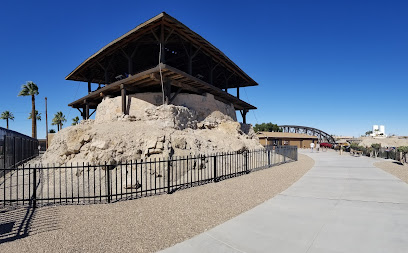
West Wetlands Park
Discover the beauty of West Wetlands Park in Yuma, Arizona, a vibrant oasis for nature lovers and families with stunning landscapes and endless recreation.
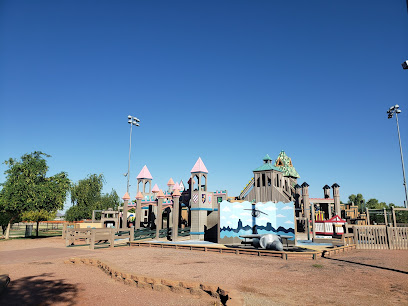
Gateway Park
Explore Gateway Park in Yuma, AZ: A serene destination for outdoor activities, family fun, and breathtaking views of the Colorado River.
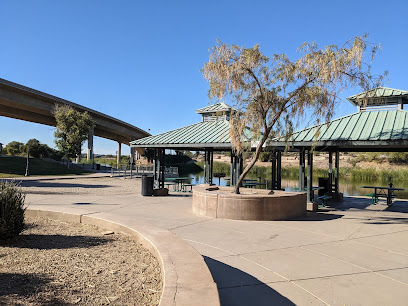
Z Fun Factory
Experience endless fun at Z Fun Factory, Yuma's ultimate theme park for families featuring go-karts, mini-golf, and exciting arcade games.
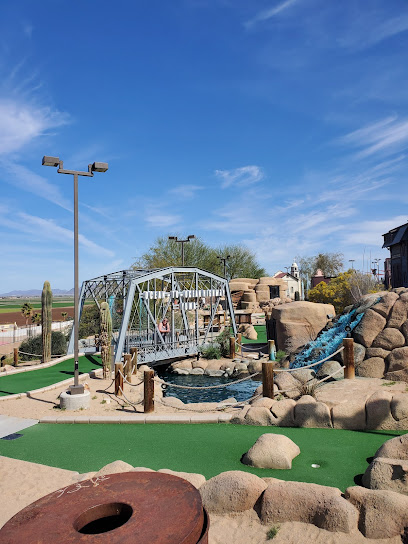
Castle Dome Mine Museum
Explore the Castle Dome Mine Museum, a unique fusion of history and adventure in Arizona’s stunning desert landscape.
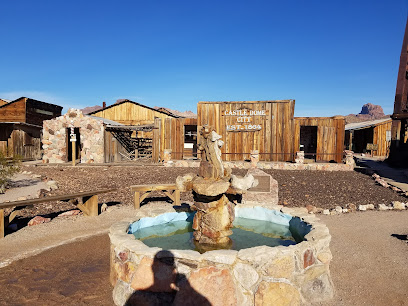
Waylon's Water World
Experience the thrill of water adventures at Waylon's Water World in Yuma, Arizona - an aquatic paradise for families and thrill-seekers.
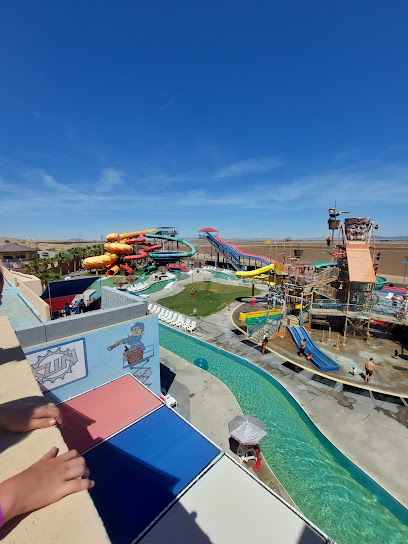
Martha's Gardens
Experience the essence of Yuma with fresh organic produce and delightful deli selections at Martha's Gardens.
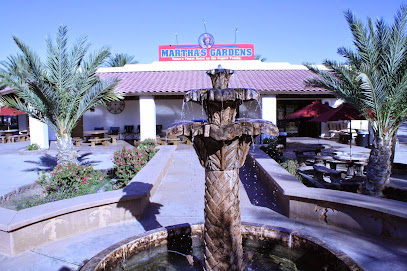
Colorado River State Historic Park
Discover the captivating history and natural beauty of Colorado River State Historic Park, a must-visit destination in Yuma, Arizona for all adventurers.
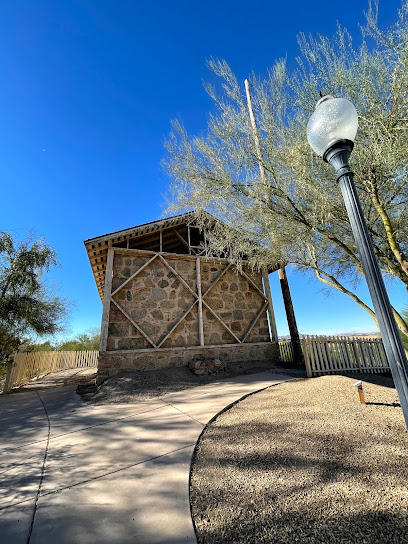
Sanguinetti Memorial Park
Explore Sanguinetti Memorial Park in Yuma, AZ - a serene park perfect for picnics, outdoor activities, and family fun amidst beautiful landscapes.
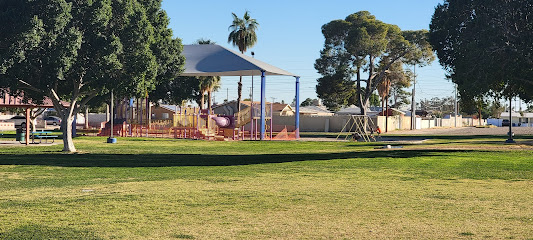
Yuma Art Center
Explore the vibrant art scene at Yuma Art Center, where creativity flourishes through exhibitions, workshops, and community events.
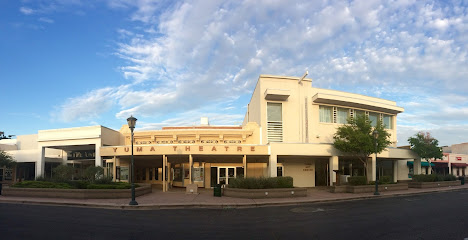
Yuma Visitor Information Center
Explore Yuma's hidden gems with essential travel resources and local insights at the Yuma Visitor Information Center, your gateway to adventure.
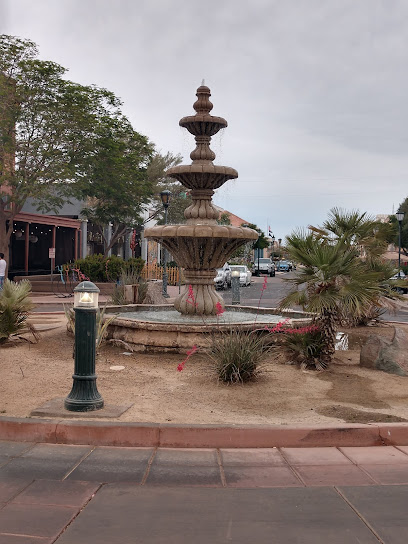
Sanguinetti House Museum and Gardens
Explore Yuma's history at the Sanguinetti House Museum and Gardens, a historic gem featuring stunning gardens and captivating exhibits that reveal the past.
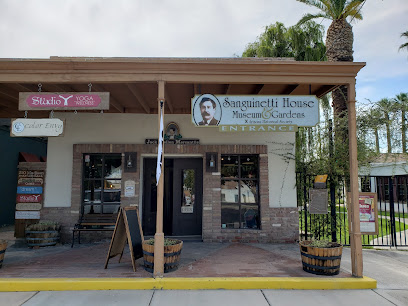
Yuma Armed Forces Park
Discover tranquility at Yuma Armed Forces Park, where nature meets a heartfelt tribute to military service in the heart of Arizona.
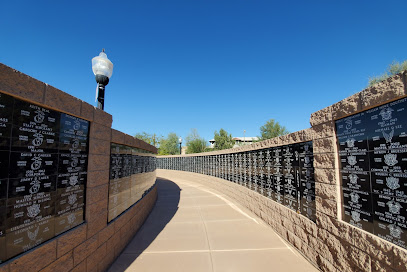
Stewart Vincent Wolfe Creative Playground
Experience the vibrant and creative atmosphere of Stewart Vincent Wolfe Creative Playground in Yuma, Arizona, perfect for family fun and imaginative play.
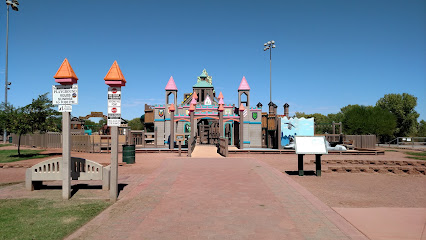
Downtown Yuma Sign
Experience the charm of Yuma, Arizona at the iconic Downtown Yuma Sign, a vibrant landmark that captures the city's spirit and history.

Unmissable attractions to see
Yuma Territorial Prison State Historic Park
Discover the intriguing history of the Wild West at Yuma Territorial Prison State Historic Park, where stories of the past come to life amidst stunning desert scenery.
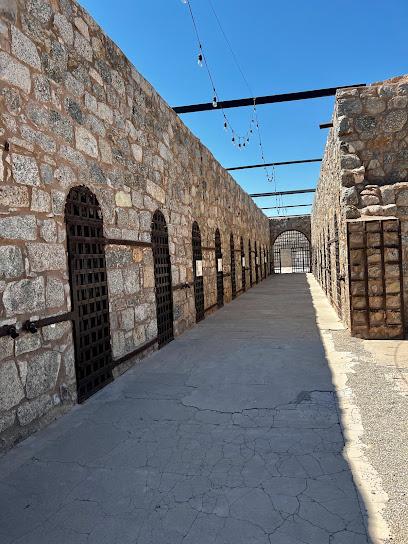
Yuma Territorial Prison State Historic Park
Discover the Wild West history at Yuma Territorial Prison State Historic Park, an iconic attraction showcasing the tales of Arizona's past.
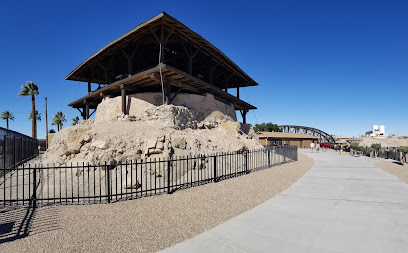
West Wetlands Park
Discover tranquility and adventure at West Wetlands Park, a beautiful oasis in Yuma, Arizona, perfect for outdoor activities and family fun.
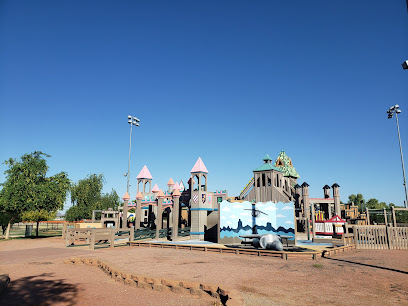
Arizona Market Place
Explore the Arizona Market Place in Yuma for unique finds, local crafts, and delicious treats in a vibrant flea market setting.
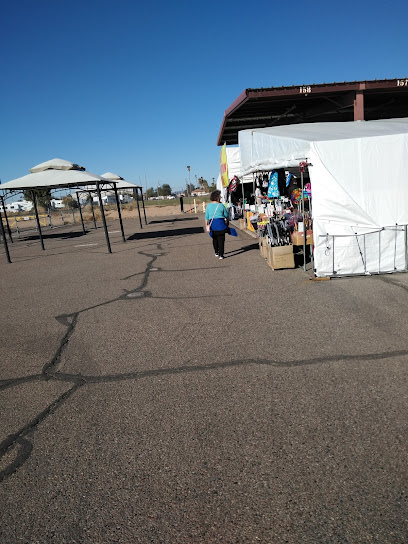
Gateway Park
Discover the natural beauty and thrilling activities at Gateway Park, Yuma's premier outdoor destination for families and adventure seekers.
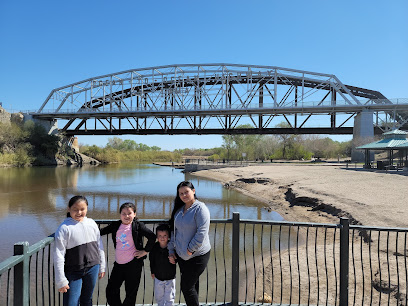
Z Fun Factory
Discover endless fun and adventure at Z Fun Factory in Yuma, Arizona, featuring go-karts, batting cages, mini-golf, and more for the whole family.
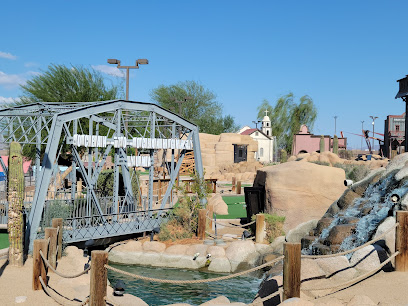
Ray Smucker Park
Discover the natural beauty and recreational charm of Ray Smucker Park in Yuma, Arizona, a perfect spot for relaxation and outdoor fun.

Castle Dome Mine Museum
Explore the haunting beauty and rich history of Castle Dome Mine Museum in Yuma, Arizona, a unique ghost town experience with hiking adventures.

Waylon's Water World
Experience the ultimate aquatic adventure at Waylon's Water World, Yuma's premier water park with thrilling slides, lazy rivers, and family fun.
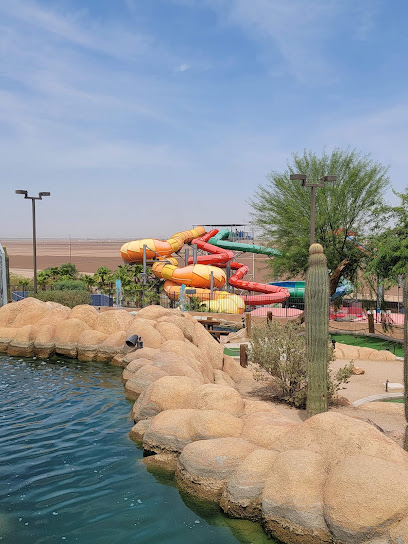
Martha's Gardens
Experience the beauty of organic farming and indulge in fresh, local delicacies at Martha's Gardens in Yuma, Arizona.
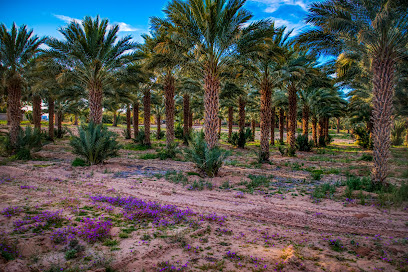
Yuma Proving Ground Open Air Museum
Explore military history at the Yuma Proving Ground Open Air Museum, where artifacts and aircraft tell the stories of innovation and bravery.
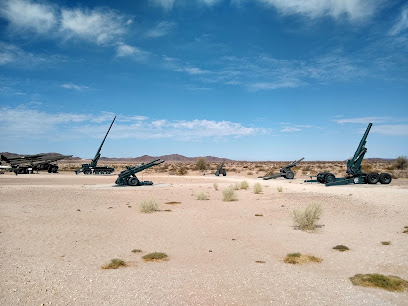
Colorado River State Historic Park
Discover the captivating history and scenic beauty of Colorado River State Historic Park, a historical landmark and museum in Yuma, Arizona.
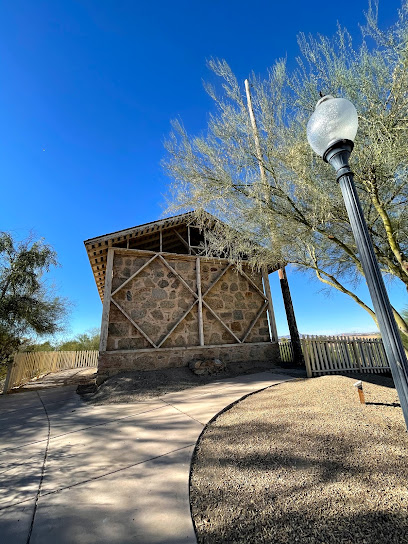
Imperial National Wildlife Refuge
Explore the breathtaking landscapes and diverse wildlife at Imperial National Wildlife Refuge, a hidden gem in Arizona's stunning desert scenery.
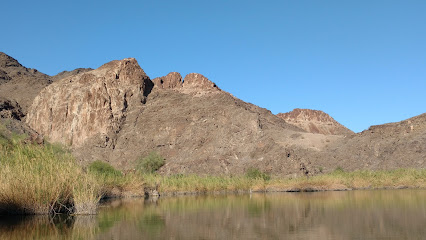
Sanguinetti House Museum and Gardens
Explore the history and beauty of Yuma at the Sanguinetti House Museum and Gardens, a serene escape into the past.
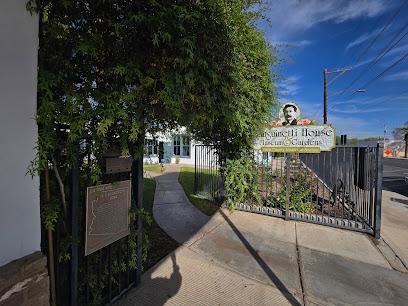
Sanguinetti House Museum and Gardens
Explore the Sanguinetti House Museum and Gardens in Yuma, AZ - a historic treasure showcasing local heritage amidst beautiful gardens.
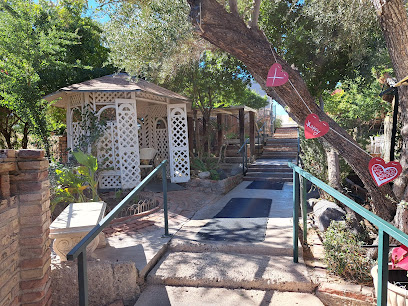
Essential places to dine
Texas Roadhouse
Experience the best of American dining at Texas Roadhouse in Yuma with delicious steaks and lively atmosphere.

Cracker Barrel Old Country Store
Savor traditional Southern cuisine at Cracker Barrel Old Country Store in Yuma – where comfort food meets charming gift shopping.
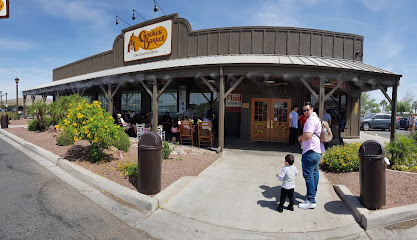
In-N-Out Burger
Experience the iconic taste of California at In-N-Out Burger in Yuma - where fresh ingredients meet classic American diner vibes.
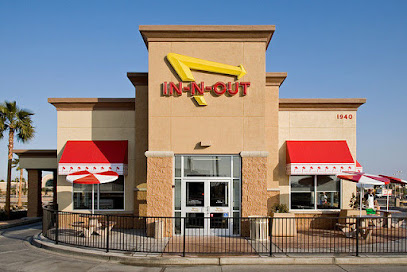
Mr. G Drive-In
Experience authentic Mexican cuisine at Mr. G Drive-In in Yuma – perfect for breakfast or lunch with generous portions.
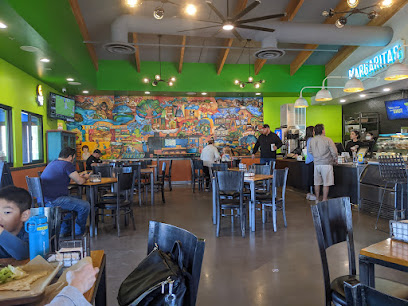
Lutes Casino
Discover delicious dining at Lutes Casino, where flavorful meals meet lively ambiance in Yuma's charming setting.
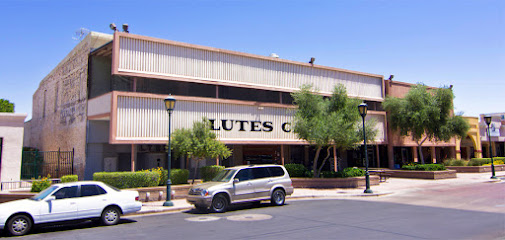
Olive Garden Italian Restaurant
Savor authentic Italian cuisine at Olive Garden in Yuma; perfect for families seeking delicious meals and warm hospitality.
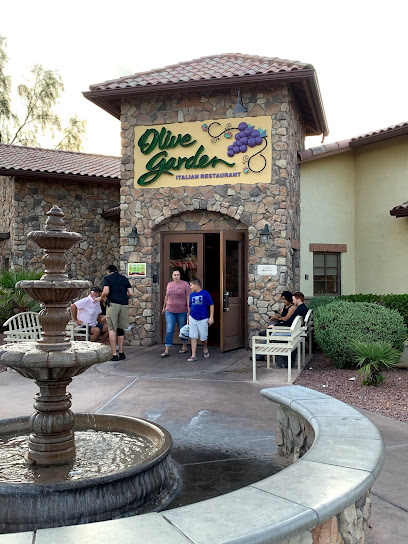
Black Bear Diner Yuma
Experience comfort food at its best in Yuma at Black Bear Diner – perfect for breakfast lovers and families alike.
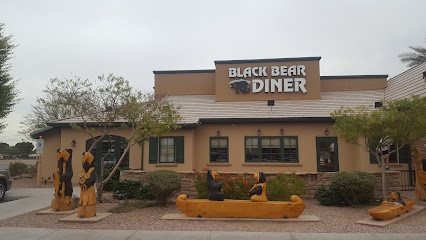
Burgers & Beer
Discover mouthwatering burgers and refreshing brews at Burgers & Beer in Yuma – where American comfort food meets vibrant dining.
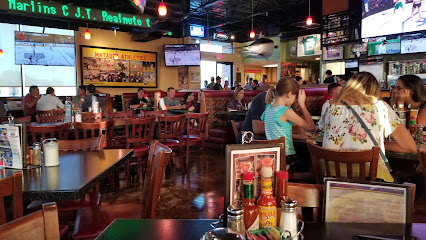
Da Boyz Italian Cuisine
Experience authentic Italian cuisine at Da Boyz Italian Cuisine in Yuma - where every dish tells a story.
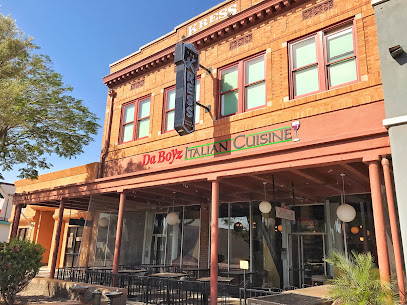
Wheezys Grill and Sportsbar
Experience vibrant dining at Wheezys Grill & Sportsbar in Yuma - where great food meets exhilarating sports action.
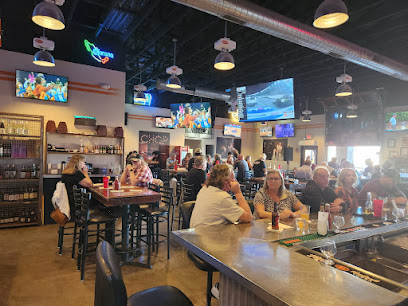
Famous Dave's Bar-B-Que
Experience mouthwatering barbecue delights at Famous Dave's Bar-B-Que in Yuma - where flavor meets tradition!
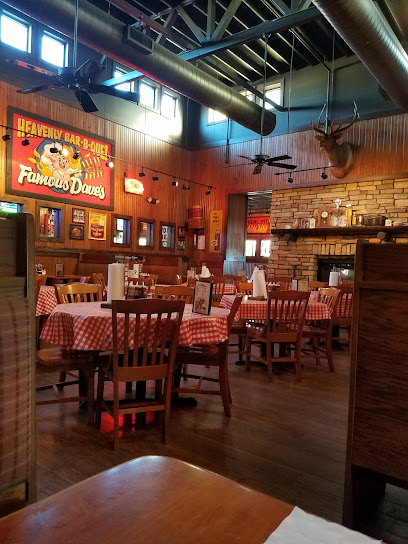
Chretin's Mexican Food
Savor the vibrant flavors of Mexico at Chretin's Mexican Food in Yuma – where every dish tells a story.
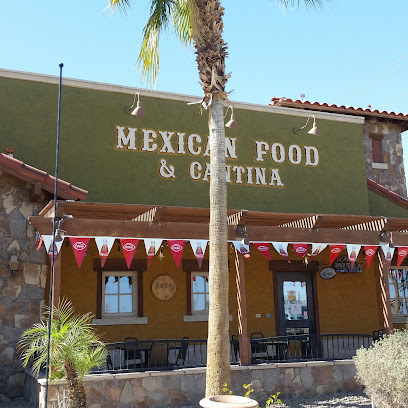
El Charro Cafe
Experience the vibrant flavors of Mexico at El Charro Cafe in Yuma - where tradition meets taste!
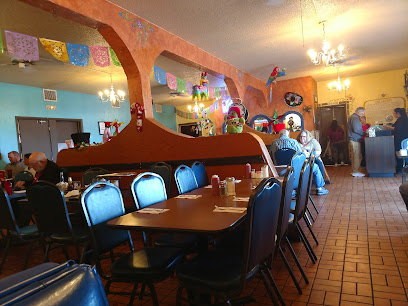
Penny's Diner
Experience the delightful flavors of classic American breakfasts at Penny's Diner in Yuma - where every meal feels like home.
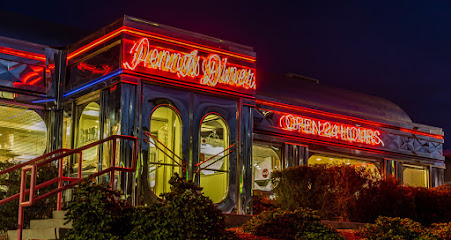
Brownie's Restaurant
Enjoy a delightful breakfast experience at Brownie's Restaurant in Yuma, AZ - perfect for families and food lovers alike!

Markets, malls and hidden boutiques
Yuma Palms Regional Center
Discover a shopping paradise at Yuma Palms Regional Center, where retail therapy meets delicious dining and fun entertainment in the heart of Yuma, Arizona.
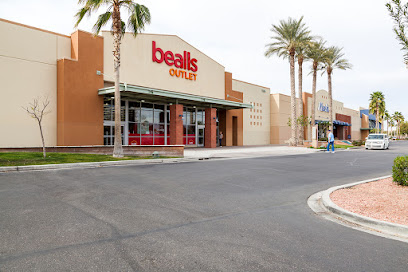
Big Curve Shopping Center
Experience the best of shopping and dining at Big Curve Shopping Center, Yuma's premier retail destination with diverse stores and delightful eateries.
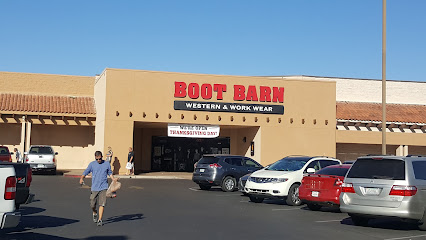
Kohl's
Discover incredible deals and a diverse selection at Kohl's in Yuma, Arizona, the ultimate department store for visitors and locals alike.

Yuma Mesa Shopping Center
Discover Yuma Mesa Shopping Center: A vibrant outdoor shopping destination with diverse stores and delightful dining experiences in Yuma, Arizona.

Marshalls
Explore Marshalls in Yuma for incredible deals on clothing, luggage, and unique finds, perfect for every traveler seeking style and value.
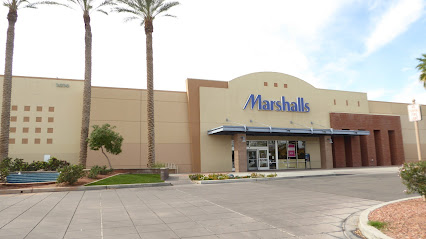
Las Palmillas Shopping Center
Discover a shopping paradise at Las Palmillas Shopping Center, where diverse stores and dining options await in Yuma, Arizona.
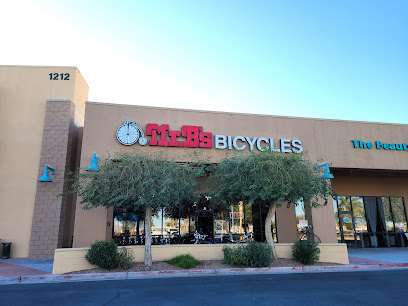
Hot Topic
Explore Hot Topic in Yuma, AZ for unique clothing, accessories, and gifts that embrace alternative styles and pop culture.
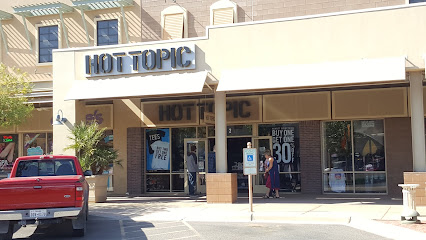
Aéropostale
Shop the latest trends in clothing for men, women, and children at Aéropostale in Yuma, where style meets affordability!
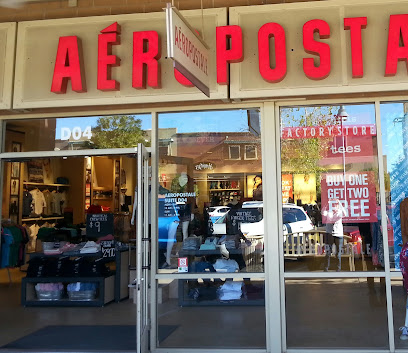
Timeless Elegance Antiques
Discover a treasure trove of vintage collectibles and unique antiques at Timeless Elegance Antiques in Yuma, Arizona, where every item tells a story.

Hospice of Yuma Thrift Shop
Explore the Hospice of Yuma Thrift Shop: a community treasure trove where every purchase supports local hospice care.
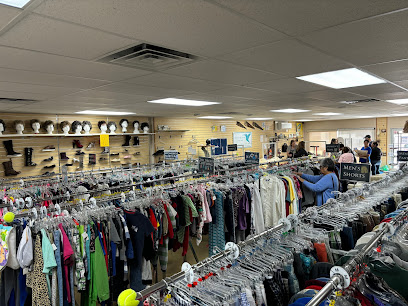
Dandy Home & Ranch
Explore Dandy Home & Ranch, Yuma's premier destination for unique gifts, home decor, and boutique treasures that reflect the local spirit.
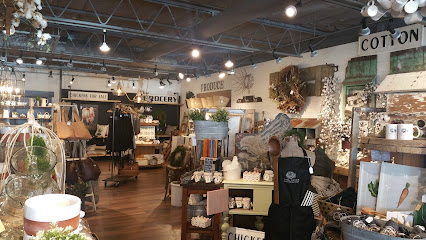
Oriental Gift Shop
Explore the Oriental Gift Shop in Yuma, AZ for unique souvenirs and culturally rich gifts that tell a story.
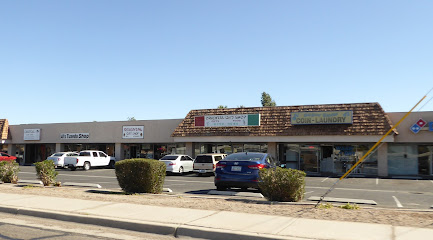
Amberly's Place Thrift Shoppe
Explore Amberly's Place Thrift Shoppe for unique finds and support local charities in Yuma, Arizona.
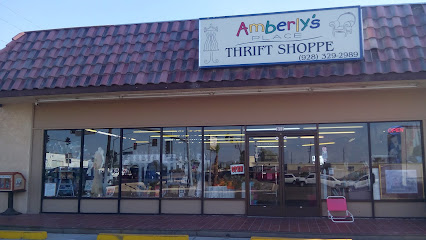
Five Below
Explore Five Below in Yuma, Arizona, where everything is just five dollars! Discover gifts, candy, and toys at unbeatable prices.

Rebel And Rove
Explore Rebel And Rove in Yuma, AZ, for unique gifts, clothing, and home goods that capture the essence of local culture.
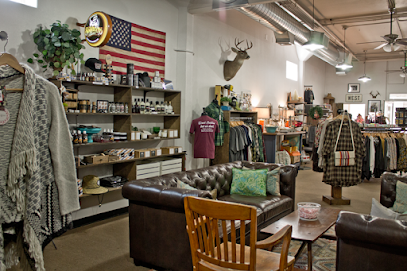
Essential bars & hidden hideouts
Wheezys Grill and Sportsbar
Experience the ultimate sports dining at Wheezys Grill and Sportsbar, where great food meets exciting game-day atmosphere in Yuma, Arizona.
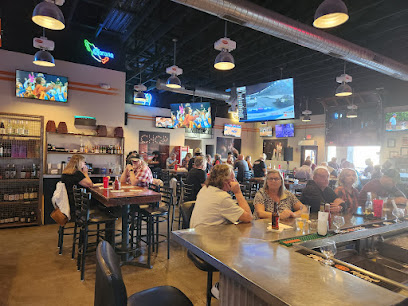
Pint House Bar & Grill
Discover Yuma's vibrant food scene at Pint House Bar & Grill, where American comfort food meets an extensive craft beer selection.
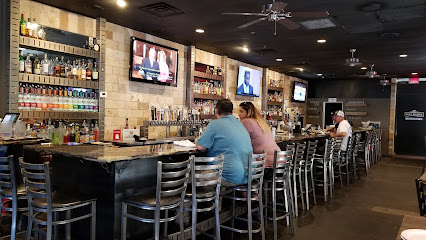
Yuma Landing Bar & Grill
Discover Yuma Landing Bar & Grill - A perfect blend of American cuisine, cozy ambiance, and vibrant cocktails in Yuma, Arizona.
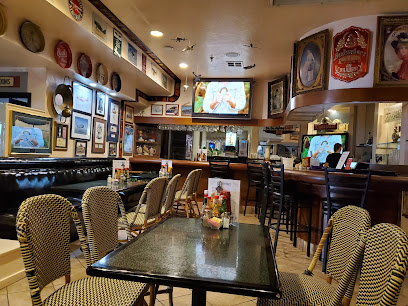
The Crossing Grill & Bar
Experience the vibrant flavors of American cuisine at The Crossing Grill & Bar in Yuma, a perfect spot for locals and tourists alike.
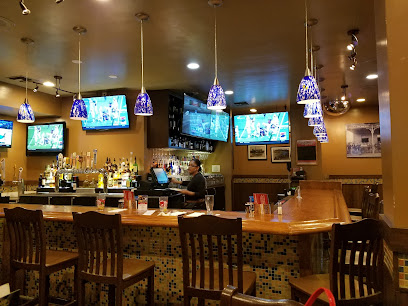
FATS
Experience the best of Yuma nightlife at FATS, where cocktails, karaoke, and sports come together for an unforgettable evening.
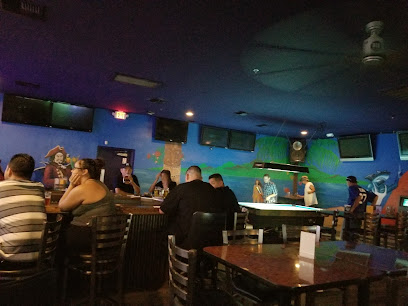
Crazy Earl's Cocktails & Pool
Experience the lively atmosphere of Crazy Earl's Cocktails & Pool, your go-to bar in Fortuna Foothills for cocktails, pool, and fun.
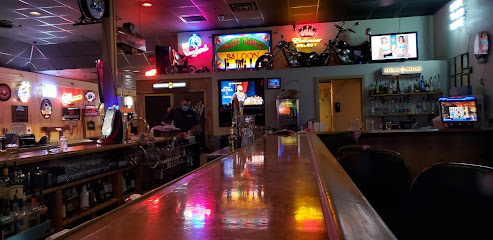
Brewers Restaurant & Sports Bar
Enjoy a vibrant atmosphere and delicious grilled dishes at Brewers Restaurant & Sports Bar in Yuma, Arizona, perfect for sports fans and food lovers alike.
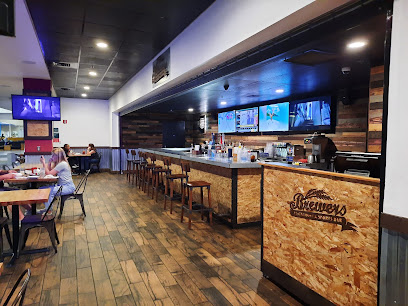
Jimmie Dee's
Discover the lively spirit of Jimmie Dee's, a top bar and live music venue in Yuma, Arizona, where unforgettable nights await.

Sage & Sand Cocktail Lounge
Experience lively nights filled with cocktails, karaoke, and live music at Sage & Sand Cocktail Lounge in Yuma, Arizona.
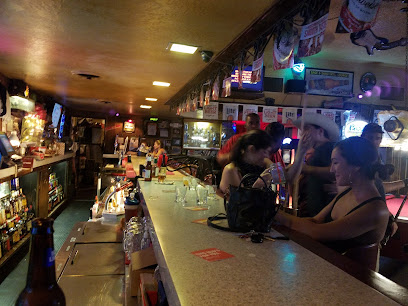
The Alement
Discover The Alement in Yuma, where refreshing drinks meet vibrant social experiences in a laid-back bar setting.
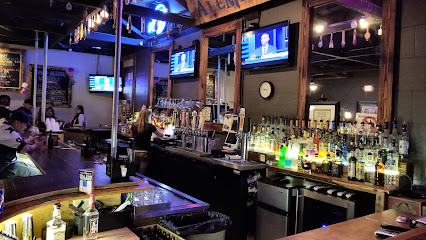
Red's Bird Cage
Discover the vibrant atmosphere and unique cocktails at Red's Bird Cage, Yuma's historic cocktail bar that promises unforgettable experiences.
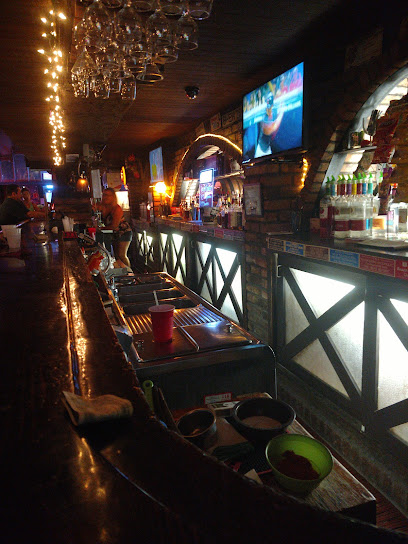
Whiskey Road Saloon
Discover the lively charm of Whiskey Road Saloon in Yuma, AZ - where good drinks and local hospitality come together.
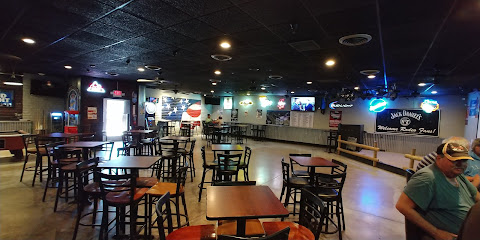
Showcase Sports Bar LLC
Experience the ultimate sports bar in Yuma, where delicious cocktails meet an electrifying atmosphere perfect for fans and food lovers alike.

Bottoms Up Bar & Grill
Discover Bottoms Up Bar & Grill in Yuma, a must-visit destination for delicious food, refreshing drinks, and a vibrant social atmosphere.
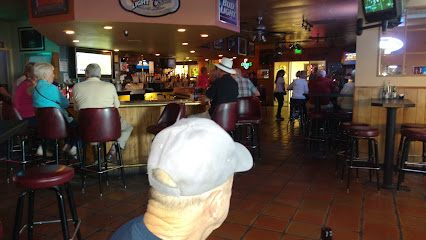
Local Phrases
-
- HelloHola
[OH-lah] - GoodbyeAdiós
[ah-DYOHSS] - YesSí
[SEE] - NoNo
[NOH] - Please/You're welcomePor favor/De nada
[pohr fah-BOHR/deh NAH-dah] - Thank youGracias
[GRAH-syahss] - Excuse me/SorryPerdón/Lo siento
[pehr-DOHN/loh SYEHN-toh] - How are you?¿Cómo estás?
[KOH-moh ehs-TAHS] - Fine. And you?Bien. ¿Y tú?
[BYEHN. ee too] - Do you speak English?¿Hablas inglés?
[AH-blahss een-GLEHS] - I don't understandNo entiendo
[NOH ehn-TYEHN-doh]
- HelloHola
-
- I'd like to see the menu, pleaseMe gustaría ver el menú, por favor
[meh goos-tah-REE-ah behr ehl MEH-noo, pohr fah-BOHR] - I don't eat meatNo como carne
[NOH KOH-moh KAHR-neh] - Cheers!¡Salud!
[sah-LOOD] - I would like to pay, pleaseMe gustaría pagar, por favor
[meh goos-tah-REE-ah pah-GAHR, pohr fah-BOHR]
- I'd like to see the menu, pleaseMe gustaría ver el menú, por favor
-
- Help!¡Ayuda!
[ah-YOO-dah] - Go away!¡Vete!
[VEH-teh] - Call the Police!¡Llama a la policía!
[YAH-mah ah lah poh-LEE-see-ah] - Call a doctor!¡Llama a un doctor!
[YAH-mah ah oon DOHK-tohr] - I'm lostEstoy perdido/a
[ehs-TOY pehr-DEE-doh/dah] - I'm illEstoy enfermo/a
[ehs-TOY ehn-FEHR-moh/dah]
- Help!¡Ayuda!
-
- I'd like to buy...Me gustaría comprar...
[meh goos-tah-REE-ah kohm-PRAR] - I'm just lookingSólo estoy mirando
[SOH-loh ehs-TOY meer-AHN-doh] - How much is it?¿Cuánto cuesta?
[KWAHN-toh KWEHS-tah] - That's too expensiveEso es muy caro
[EH-soh ehs mwee KAH-roh] - Can you lower the price?¿Puedes bajar el precio?
[PWEH-dehs BAH-hahr ehl PREE-syoh]
- I'd like to buy...Me gustaría comprar...
-
- What time is it?¿Qué hora es?
[keh OR-ah ehs] - It's one o'clockEs la una
[ehss lah OO-nah] - Half past (10)Y media
[ee MEH-dee-ah] - MorningMañana
[mah-NYAH-nah] - AfternoonTarde
[TAHR-deh] - EveningNoche
[NOH-cheh] - YesterdayAyer
[ah-YEHR] - TodayHoy
[oy] - TomorrowMañana
[mah-NYAH-nah] - 1Uno
[OO-noh] - 2Dos
[dohss] - 3Tres
[trehs] - 4Cuatro
[KWAH-troh] - 5Cinco
[SEEN-koh] - 6Seis
[says] - 7Siete
[syeh-teh] - 8Ocho
[OH-choh] - 9Nueve
[NWEH-veh] - 10Diez
[dyehss]
- What time is it?¿Qué hora es?
-
- Where's a/the...?¿Dónde está...?
[DOHN-deh ehs-TAH] - What's the address?¿Cuál es la dirección?
[KWAHL ehs lah dee-rehk-SYOHN] - Can you show me (on the map)?¿Puedes mostrarme (en el mapa)?
[PWEH-dehs mohs-TRAHR-meh (ehn ehl MAH-pah)] - When's the next (bus)?¿Cuándo es el próximo (autobús)?
[KWAHN-doh ehs ehl PROHK-see-moh (ow-toh-BOOSS)] - A ticket (to ....)Un boleto (a ...)
[oon boh-LEH-toh (ah ...)]
- Where's a/the...?¿Dónde está...?
History of Yuma
-
Yuma's history dates back to its establishment in 1854 when the Gadsden Purchase made the region part of the United States. Originally named Colorado City, it was renamed Yuma in 1873. The city developed as a significant crossing point on the Colorado River, serving as a key location for travelers heading to California during the Gold Rush.
-
Yuma Crossing holds historical significance as a vital crossing point over the Colorado River. It served as a critical juncture for early explorers, settlers, and military expeditions. The crossing was a strategic site for the Butterfield Overland Mail route and later became a central point for the Southern Pacific Railroad, which contributed to Yuma's growth.
-
The Yuma Territorial Prison, established in 1876, is one of the most iconic landmarks in Yuma. It housed some of the most notorious outlaws of the Old West. The prison operated until 1909 and has since been transformed into a museum, offering visitors a glimpse into the harsh conditions faced by prisoners during that era.
-
Yuma's fertile soil and favorable climate have made it an agricultural powerhouse. The introduction of irrigation in the early 20th century transformed the region into a prolific farming area. Today, Yuma is known as the 'Winter Lettuce Capital,' producing a significant portion of the nation's winter vegetables.
-
During World War II, Yuma played a crucial role with the establishment of the Yuma Army Airfield in 1942. The airfield served as a training ground for pilots and aircrews. After the war, it was repurposed for civilian use and is now known as the Marine Corps Air Station Yuma, continuing its legacy of aviation training.
-
Yuma's culture is a rich tapestry woven from its Native American, Spanish, Mexican, and American settlers. The Quechan Tribe, originally inhabiting the region, continues to play a vital role in preserving their traditions and contributing to Yuma's cultural fabric. Annual events, such as the Yuma County Fair and the Midnight at the Oasis car show, celebrate the city's diverse heritage.
-
Historic Downtown Yuma offers a charming glimpse into the city's past. The area is home to restored buildings, vintage shops, and museums that reflect Yuma's historical significance. Key landmarks include the Yuma Art Center, the Sanguinetti House Museum, and the Yuma Quartermaster Depot State Historic Park, which provide insights into the city's evolution over the centuries.
Yuma Essentials
-
Yuma is located in the southwestern corner of Arizona, near the borders of California and Mexico. The nearest major airport is Yuma International Airport (YUM), which is served by American Airlines. Alternatively, you can fly into Phoenix Sky Harbor International Airport (PHX) and drive approximately 3 hours southwest to Yuma. For those traveling by car, Yuma is conveniently located along Interstate 8. Amtrak also offers train services to Yuma via the Sunset Limited route.
-
Yuma is a relatively small city, making it easy to navigate. Rental cars are readily available and offer the most flexibility for exploring the area. The Yuma County Area Transit (YCAT) provides public bus services within the city and to surrounding areas. Taxis and rideshare services like Uber and Lyft are also available. For a unique experience, consider taking a historic riverboat tour along the Colorado River.
-
The official currency in Yuma, as in the rest of the United States, is the U.S. Dollar (USD). Credit and debit cards are widely accepted in hotels, restaurants, and shops. ATMs are plentiful, but it's a good idea to carry some cash for smaller establishments or outdoor markets. Traveler's checks are less commonly used but can be exchanged at most banks.
-
Yuma is generally a safe destination for tourists. However, it is advisable to take standard precautions. Avoid walking alone at night in unfamiliar areas and be cautious of your surroundings. Some neighborhoods in the western part of the city have higher crime rates; thus, it is best to avoid these areas after dark. Always keep an eye on your belongings in crowded places.
-
In case of an emergency, dial 911 for immediate assistance. Yuma has several medical facilities, including the Yuma Regional Medical Center. It is advisable to have travel insurance that covers medical emergencies. For non-emergency medical advice, there are numerous pharmacies where you can purchase over-the-counter medications.
-
Fashion: Do dress comfortably and appropriately for the hot desert climate. Lightweight, breathable clothing is recommended. Avoid overly revealing attire in public spaces. Religion: Do show respect when visiting places of worship. Remove hats and speak softly. Public Transport: Do be courteous to drivers and fellow passengers. Don't eat or drink on public buses. Greetings: Do greet people with a friendly 'hello' or handshake. Avoid overly familiar gestures with strangers. Eating & Drinking: Do try local foods and be open to new culinary experiences. Don't forget to tip in restaurants, usually around 15-20%.
-
To experience Yuma like a local, visit the Yuma Farmers Market, held every Tuesday and Sunday, where you can find fresh produce and local crafts. Explore the historic downtown area, which offers a variety of shops, restaurants, and art galleries. Don’t miss the Yuma Territorial Prison State Historic Park for a glimpse into the city’s past. For outdoor enthusiasts, the Imperial Sand Dunes and the Colorado River offer excellent opportunities for adventure and relaxation.
Trending Landmark in Yuma
-
Yuma Territorial Prison State Historic Park
-
West Wetlands Park
-
Gateway Park
-
Z Fun Factory
-
Castle Dome Mine Museum
-
Waylon's Water World
-
Martha's Gardens
-
Colorado River State Historic Park
-
Sanguinetti Memorial Park
-
Yuma Art Center
-
Yuma Visitor Information Center
-
Sanguinetti House Museum and Gardens
-
Yuma Armed Forces Park
-
Stewart Vincent Wolfe Creative Playground
-
Downtown Yuma Sign
Nearby Cities to Yuma
-
Things To Do in Palm Desert
-
Things To Do in Lake Havasu City
-
Things To Do in Palm Springs
-
Things To Do in Joshua Tree
-
Things To Do in Tijuana
-
Things To Do in Chula Vista
-
Things To Do in San Diego
-
Things To Do in Coronado
-
Things To Do in La Jolla
-
Things To Do in Temecula
-
Things To Do in Phoenix
-
Things To Do in Carlsbad
-
Things To Do in Oceanside
-
Things To Do in Tempe
-
Things To Do in Scottsdale











